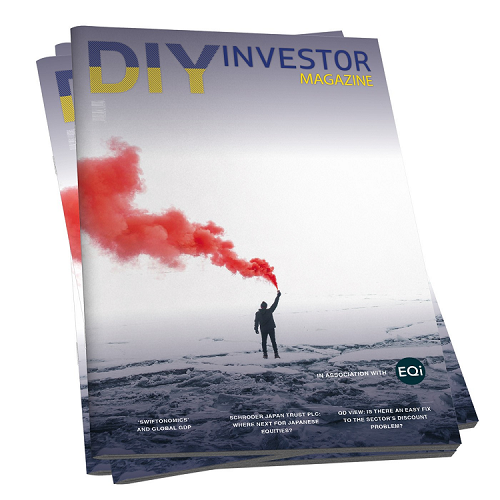Dec
2023
QD view: Is there an easy fix to the sector’s discount problem?
DIY Investor
9 December 2023

Over the past 18 months or so, share price discounts to NAV on a wide variety of investment companies have widened considerably. Higher interest rates are one factor in this but there are other factors at play, including one serious issue that dates back to 2013 – by James Carthew
There is a long, complicated, and rather technical history to this 10-year issue. In summary, various factors are combining to lock funds of funds, wealth managers, IFAs, pension funds and now – in some cases – even private investors out of investment companies.
The main problem boils down to the presentation of costs. In a world where we are repeatedly reminded that past performance is no guide to the future and that attempting to forecast short-term market moves is a mug’s game, one of the few things that investors can latch onto is how much will this investment cost me? The problem is that the way that costs are disclosed on investment companies is not the same as for open-ended UCITS funds.
‘The main problem boils down to the presentation of costs’
Back in 2013, the EU implemented a piece of legislation – the Alternative Investment Fund Managers Directive (AIFMD). It was designed to bring in some investor protection for investors in things like hedge funds. Here in the UK, a decision was made to ‘gold plate’ the legislation by bringing investment companies within its scope, designating them as Alternative Investment Funds (AIFs). No other EU member did this and we did not have to.
Then another piece of EU legislation – MiFID II – introduced in 2018, set out rules around how funds including AIFs should disclose their charges. This required them to aggregate all of the costs that impact on the value of an investment, which results in one number, the total cost figure and this is input into a system used by all professional investors. That number includes the cost of running the fund, plus – if it holds other funds – the cost of running those funds too.
One big problem for the investment companies’ industry was that UCITS open-ended funds did not have to do this cost aggregation as UCITS funds were covered by a separate set of rules. So immediately, a whole raft of investment companies looked more expensive than equivalent open-ended funds. We were promised that PRIIPs rule changes would bring UCITS funds into line in January 2023. However, this did not happen, as PRIIPs is to be scrapped.
That weighed on the sector for a long time, but a move last year by the open-ended fund industry to get their members to fall into line – ahead of a planned rule change that has since been scrapped – has actually made things worse. Suddenly those open-ended funds of funds that are complying with the request are looking much more expensive to run. They have been shrinking and switching out of funds, including investment companies, into ‘normal’ companies where they can.
There is a clear illogicality to this. There are quite a few funds that do very similar things to ‘normal’ companies. For example, The Renewables Infrastructure Group holds a diversified portfolio of onshore and offshore wind, solar and energy storage projects. It could give up the tax benefit of the investment company structure and become a ‘normal’ company. It is likely that either way it would have a similar level of overheads.
‘the perceived running costs of investment companies make them too expensive to fit into portfolios anymore’
When an investor buys a company, there is an acceptance that net returns after costs drive share price performance. Yes, it is important to keep an eye on what management are spending (and nobody, especially me, is suggesting that costs can be ignored), but overheads are only a small part of the consideration. Why should investment companies be any different?
But I don’t base my entire investment decision on charges, I can hear you saying. Well, you may not, but for many professional investors that report on charges to their clients, the perceived running costs of investment companies make them too expensive to fit into portfolios anymore, regardless of how well they are doing.
The new UK Consumer Duty rules have compounded the problem again by putting an onus on dealing platforms to ensure that their customers are getting value for money. Now retail investors are being blocked from buying some investment companies on cost grounds, based on misleading cost figures and I suspect in some cases just based on costs not the return after cost.
‘Now retail investors are being blocked from buying some investment companies on cost grounds’
Many of you may also have observed a widening of spreads – the gap between the selling price and the buying price – for investment companies. The problem with spreads also goes back to AIFMD.
The banks that own the brokers are subject to Basel rules that govern the amount of capital that they are required to hold. Under these rules, AIFs – which everywhere else other than the UK are things like hedge funds and baskets of stocks and derivatives – are designated as Collective Investment Undertakings (CIUs).
For regulatory capital purposes, brokers are required to hold 8% of the value of their equity positions as capital, but for CIUs the figure is 32%. This has massively shrunk the amount of capital that brokers are prepared to commit to making markets in our stocks. Again, to illustrate the absurdity of this, if a broker holds 100 individual equities, its capital requirement is four times lower than if it has exposure to the same equities through an investment company structure.
And it gets worse, from 2025, with Basel 3.1, the capital requirement to hold CIUs will rise to 70%.
There is an easy fix to this, turn the clock back to 2013 and reverse the ruling that investment companies are AIFs.
That is what a number of industry participants are hoping for. It will not be a panacea for all of the sector’s ills, but it might halt the current buyers’ strike that has caused share prices to collapse.
James Carthew, is head of investment companies at
![]()

Brexit » Brokers Commentary » Commentary » Investment trusts Commentary » Investment trusts Latest » Latest » Mutual funds Commentary

Leave a Reply
You must be logged in to post a comment.